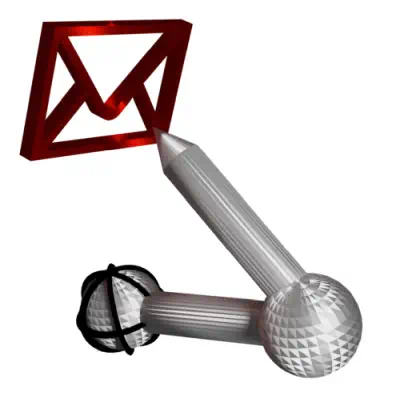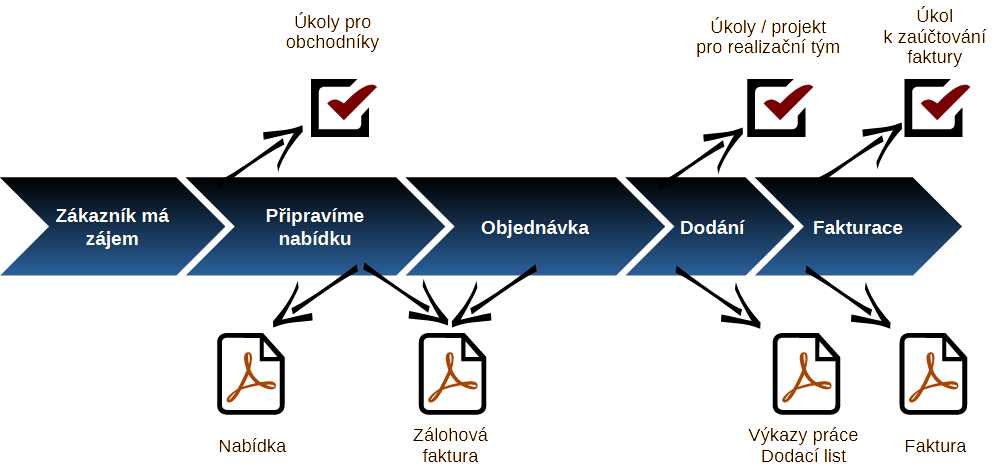AyMINE – Technical documentation
Modules
Integration with ERP Abra Gen
 Task, project & quality management
Task, project & quality management
Manager approval with the task report
Why some data can't be deleted
GDPR and record of qualifications
Qualification of user or contact
Right to Manage Qualifications
Adminitration of areas, projects, calendars
Failure Analysis for an Individual Property of a Component or Process
FMEA – Probability of Detection
FMEA – Probability of Occurrence
 Task, project & quality management
Task, project & quality management
Administration of the Task Management Module
System rights for the task management module
Improvements and Preventive Measures
Methodology and Quality Management systems
What makes up the methodology / SMJ
Problems, tickets and their management
Collaborative Resolution of Multiple Problems
Customer Service Response Generation
Incident and Quality Issue Management
Objects affected by the problem
Problems, Incidents, Helpdesk Tickets
Return project plan by baseline
Sample tasks and methodologies of the area
Effect of the task on the right to modify the attached object
The person responsible for the task
Working procedure – task definition
Management of responsibilities - RACI Matrix
Objects related to the task pattern
 Contacts and directories module (CRM)
Contacts and directories module (CRM)
Address book list and management
Directory or people and companies
Order overview for customer groups
 Contacts and directories module (CRM)
Contacts and directories module (CRM)
System Permissions and CRM Module Settings
Send bulk messages in compliance with GDPR
How to correctly forget a person's details
Unsubscribe and set preferences
for bulk mail
 Web management and automation
Web management and automation
Receiving a message from the web
Human resources
Personalistics – User Permissions and roles
Human Resources module security
Manage department / division data
Overview of Personnel Information for pracov# Employment Contract
Synchronizing staff and system users
 Products, assets and sales
Products, assets and sales
Creating and processing orders
Manage the Property & Business module
Why are the Quality criteria usefull
Managing Finance
Metrics and Measurements
Work summaries from generated data
Technical Modules
Sabre plugin module
Enterprise Architect connector
Database link to Enterprise Architect database
Enterprise Architect connector
System Modules
 The AyMINE Framework Module
The AyMINE Framework Module
AyMINE — Tips for Mobile Usage
Configure how your system looks and works
Gestures and Keyboard Shortcuts
More about how the system works
Private notes and tags for objects
Overview of Modules and Record Types
 Business Offer
Business Offer 
Business Offer allows you to create quotes based on products on the record as well as by directly entering items
- Process from order to invoice
- Vendor
- Advance invoice
- Safety when bidding - keep an eye on the safe selling offer
- You may be interested in bids
Process from order to invoice
Under the system, you process the entire order through delivery to invoicing:
Business Offer defines a set of goods and services offered at a common price. The price is calculated from individual items, but can also be determined directly by the price not taking into account prices for the goods.
Prices for the items in the quotation are calculated either directly according to the prices stated for the products or from the price lists. Price lists must be assigned to the order.
Price lists can be assigned multiple, then they are in order of priority. Should any item be in more price lists, the price from the highest priority price list will be used. Offer price recalculation function allows quick quotation calculation even with automatic currency conversion.
It is possible to create advance invoices for the whole amount or a proportional part of the offer.
Vendor
The system allows you to create offers under the heading of different suppliers – you can use different suppliers for different markets or different operated e-shops. (Careful though, accounting is kept for one subject.)More about module setup.
Advance invoice
It is possible to generate an advance invoice directly from the offer (in PDF). Conversely the invoice can be generated from the order. It is also possible to automatically generate an advance invoice and send it via the attached email account directly to the customer.
Safety when bidding - keep an eye on the safe selling offer
Check discount amount
If you have more than one trader, e.g. a business traveller, you need to protect yourself that the trader will not make an offer that would be disadvantageous to your business. It is important for every trader to be able to offer discounts, but at the same time you need the discounts not to be too high.
AyMINE allows you to keep track of how high discounts traders can give. For each trader separately you can set:
- Maximum discount amount in absolute amount
- Maximum percentage discount on the whole offer as well as on the individual menu item
- Maximum amount of the total offer.
The trader has the possibility to create and calculate an offer calculation with higher discounts, but will not be able to send such an offer. It may refer it to the store manager, who may modify, reject, or send it.
Tip: Check the trader on a trial basis. If a new dealer, you can set that the maximum bid amount is 0. Then it can prepare offers, but they all go to the manager for approval before being sent.
Check that it can never send an offer without your consent
When traders send offers under their name and their email account, you effectively don't have control in the company who they promise what to. Therefore, you should always have the quotes set to go out of the official email account for offers. This will give you the assurance that you have control over the offers:
- You can control what the trader commits the company to
- You can set up a secure system for approving offers
- You can easily continue to work with an offer even if the trader is not available.
How to check offers
- Set up an email account in AyMINE for sending offers and clearly and publicly state that only offers from that email are valid, typically nabidka@vasefirma.cz. Traders can send an offer via this email via AyMINE, which will check the offer and save it so it will always be traceable.
- Set up a rule that the offer must have an electronic stamp put into the offer by AyMINE, but dealers themselves cannot. You can then be sure that they will not send an offer that was not created by an approved procedure.
You may be interested in bids
Related topics:
